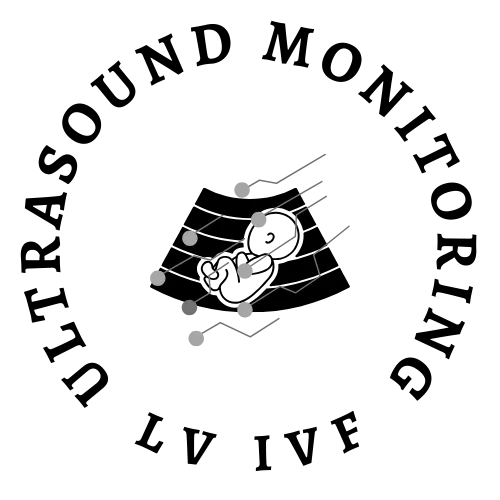
Ultrasound Monitorig
for Your IVF Cycle
For IVF monitoring cycles that are out-of-state of your location
To schedule an appointment
Please Call True Health Acupuncture at 702-475-0870
You can also book online on the True Health Acupuncture website.
1535 W Warm Springs, Ste 135
Henderson, Nevada 89014
Testimonials

Michelle A.
My name is Michelle Aukerman. And I just have to say that Joyce at True Health Acupuncture is probably the best ultrasound technician I have ever had in my life and I’ve been through several. She’s very personal and talks through everything and if something goes wrong, she says OK how do we make this right? What’s the next step we need to take? You don’t hear that from any other ultrasound tech, they're so jaded. The comfort environment at True Health Acupuncture is unmatchable. It does not feel like a doctor's office and everybody is so warm but when it comes to Joyce, she is completely unmatched. It’s like having your own mother right there with you. I highly highly recommend her.
Thank you, the Aukerman’s
This is the second pregnancy that I came to Joyce for my outside monitoring. I have been very nervous about the whole process, but Joyce guided me through each and every ultrasound. Although the monitoring went smoothly, upon achieving pregnancy I developed some bleeding. Of course, I panicked. Joyce explained everything that was going on with my bleeding and helped me through this anxious time. I don’t know what I would have done without Joyce’s calm demeanor. And the added bonus is having acupuncture treatment right there at True Health Acupuncture, the office Joyce works out of. I will always be truly thankful for the amazing experience that I received from both Joyce and True Health to be a part of my fertility journey.

Sara P.
Joyce is an exceptional individual who made a significant impact during my IVF journey. I had the privilege of meeting her when I needed support, and she was able to perform ultrasounds when our IVF Dr was unable to accommodate us. Her ability to confirm our twin pregnancy was incredibly reassuring. Joyce took the time to explain everything she was observing, which not only made the experience more memorable but also helped alleviate my anxiety. Her compassionate approach truly made a difference in my experience.

Nicole B

Practical Considerations and Patient Perspectives: Tamoxifen in IVF
We've explored the critical role of the endometrium in IVF, the dual nature of Tamoxifen, the promising findings from a Chinese study, and the science behind how this medication might work. Now, let's shift our focus to what this means in practice for patients considering or undergoing IVF treatment. Understanding the practical considerations and patient perspectives is crucial for informed decision-making.
Who Might Benefit from Tamoxifen in IVF?
Tamoxifen is not typically a first-line treatment for all IVF patients. It is most likely to be considered for women who face the persistent challenge of a thin endometrium – particularly those who have not responded adequately to conventional treatments like higher doses of estrogen. If you've undergone multiple IVF cycles where a thin uterine lining has been identified as a potential barrier to implantation, discussing Tamoxifen with your fertility specialist might be a valuable next step. It offers an alternative strategy when other approaches have been exhausted.
Understanding Potential Side Effects
Like any medication, Tamoxifen comes with potential side effects. It's important to note that when used in IVF, it's typically for a short duration and at specific times in the cycle, which can influence the severity and frequency of side effects. Common side effects, often mild and temporary, can include:
Hot flashes: Similar to menopausal symptoms, these are a frequent complaint.
Vaginal dryness or discharge: Due to its anti-estrogenic effects in some tissues.
Nausea or upset stomach: Generally mild.
Headaches: Another common, usually mild, side effect.
More serious side effects are rare, especially with short-term use, but it's essential to discuss all potential risks with your doctor. The benefits of potentially achieving a successful pregnancy must always be weighed against these risks in a personalized discussion with your healthcare provider.
Dosage and Administration in IVF
When used for endometrial preparation in IVF, Tamoxifen is typically prescribed for a limited number of days during the follicular phase of the menstrual cycle, often before embryo transfer. The exact dosage and timing will be carefully determined by your fertility specialist based on your individual response and medical history. It's crucial to follow your doctor's instructions precisely to maximize efficacy and minimize risks.
The Importance of Discussion with Your Doctor
Ultimately, the decision to use Tamoxifen in your IVF protocol is a highly personal one that should be made in close consultation with your fertility specialist. They can assess your specific situation, review your medical history, and discuss whether Tamoxifen is a suitable option for you. Don't hesitate to ask questions about the potential benefits, risks, and alternatives. Shared decision-making ensures that your treatment plan aligns with your values and goals.
Looking Ahead: The Need for More Research
While the existing research, particularly the promising Chinese study, provides a strong foundation, the medical community continues to seek more large-scale, prospective studies to further solidify Tamoxifen's role in IVF. These studies will help refine treatment protocols and identify the patient populations most likely to benefit. In our final post, we will look at the broader future of thin endometrium treatment in IVF and where Tamoxifen fits into this evolving landscape.
Starting your cycle
Starting an IVF cycle is stressful enough, doing it with an out-of-state provider just increases that stress. That is why we have developed an out-of state monitoring program to help women that need ultrasound monitoring without having to travel to their provider. We follow your physicians instructions and with be able to accommodate your schedule. Most all cycles, whether retrievals or transfers, will need 2-3 ultrasounds during that cycle. All reports can be faxed or emailed to your physician within 2-3 hours after the exam is finished.
